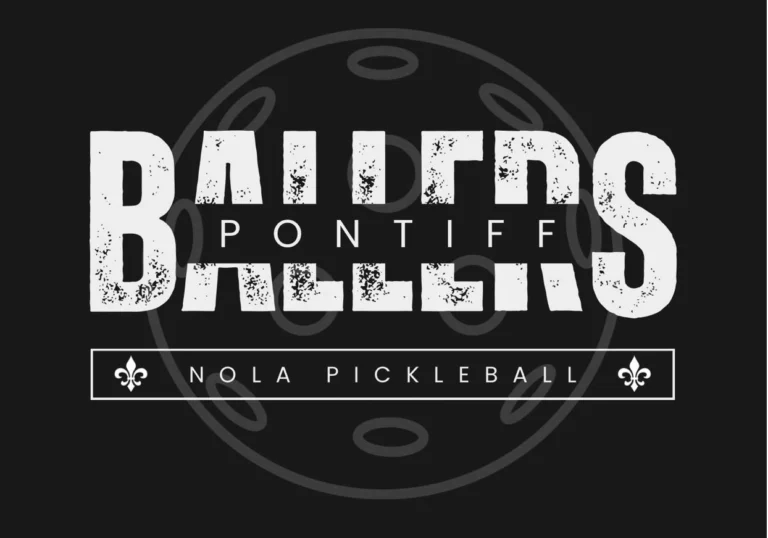A Closer Look at UPAA
Changes and Controversies in Professional Pickleball
The recent changes and controversies in professional pickleball have sparked significant discussions. This article focuses on the new standards and fees introduced by the United Pickleball Association of America (UPAA) and the Professional Pickleball Association (PPA).

What is the UPAA?
The UPA-A, formed last month, is the new for-profit company comprising the PPA Tour and Major League Pickleball. Unlike the USAP, which is a nonprofit 501(c)(3) corporation, the UPAA aims to regulate and oversee the rapidly growing sport. The UPAA is attempting to replace the USAP as the primary governing body in professional pickleball, bringing significant changes to the sport’s landscape.
Large Paddle Brands on the UPAA Board
- JOOLA
- Selkirk
- ProXR/United Pickleball Paddles
- Franklin
- Onix
- Vulcan
These brands play a significant role in shaping the standards and regulations for pickleball equipment under the UPAA’s governance.
Why is this Important?
The United States of America Pickleball Association (USAP) has long been the accepted standard for paddle testing and certification in the pickleball community. While USAP has faced its share of missteps and issues, it is still better than the proposed alternative.
Handing the reins to a for-profit organization like the United Pickleball Association of America (UPAA) raises significant concerns. Unlike USAP, which operates with the goal of maintaining the sport’s integrity, UPAA stands to benefit financially from its position of power. This shift could lead to conflicts of interest, where decisions might favor profit over fairness and innovation.
The potential for financial gain introduces biases that could compromise the standards of paddle testing. Companies with deeper pockets might influence decisions, stifling competition and hindering smaller, innovative brands from entering the market. This move could ultimately harm the sport by reducing the diversity of paddle choices available to players and slowing down advancements in paddle technology.
Additionally, the transparency and accountability of a for-profit governing body are questionable. Unlike a nonprofit organization, a for-profit entity is driven by revenue generation, which might overshadow its commitment to the sport’s best interests. Ensuring that paddle standards are upheld impartially and consistently is crucial for the sport’s growth and credibility.
In summary, while the USAP has had its challenges, transferring paddle testing and certification to a profit-driven organization like the UPAA is not a wise move. It risks undermining the integrity of the sport, creating financial barriers for smaller brands, and prioritizing profit over the fair regulation and innovation of pickleball equipment.
USAP’s Misstep with Gen 3 Paddles
The UPAA’s attempt to replace the USAP as the governing body of professional pickleball has been strategically timed. This coincides with the recent controversy surrounding the USAP’s handling of the Gen 3 paddles from JOOLA. The USAP’s decision to delist these paddles due to non-compliance with their standards has sparked significant backlash from players and manufacturers alike.
This controversy has raised questions about the USAP’s testing and certification processes. However, the UPAA’s move to introduce their own standards and fees seems to be a premeditated plan rather than a genuine response to these issues. By capitalizing on the situation with the Gen 3 paddles, the UPAA has positioned itself as the solution to the perceived problems within the USAP. Despite the potential conflicts of interest and the negative impact on smaller paddle manufacturers.
The timing of the UPAA’s formation and the announcement of new, stricter regulations suggest a coordinated effort to gain more control over the professional pickleball landscape. This move appears to benefit larger brands that make up the UPAA board, further marginalizing smaller companies and reducing competition.
Rumored New Structure by UPAA
According to Rob Nun, a credible source in the pickleball community, starting in 2025, paddle brands will pay an annual fee of $100,000 to be part of the UPA. Additionally, there will be a per-paddle fee of $5,000. This will amount to significant cost increases, which would be passed on to the consumer.
Why the Fees?
The UPAA’s introduction of fees appears to be a strategic business move to drive revenue. By charging paddle manufacturers for the right to use their paddles during events, the UPAA seeks to regulate the industry. This change impacts larger companies like JOOLA, Selkirk, and ProXR/Paddletek less because they already produce paddles in mass volume. However, smaller brands might struggle to get their paddles in pro hands, reducing their exposure and raising the barrier to entry.
What Does This Mean for Pickleball?
Exposure on the pro circuit and brand ambassadorship can significantly impact paddle companies. A brand like Proton, for example, might not have achieved its current success without visibility in gold-medal matches. Although this change might not spell the end for smaller brands, it will certainly make things more challenging. Consequently, it could create more exposure for bigger brands or lead to more mergers.
UPAA Impact on Small Brands
This new pay-to-play model benefits large, established brands but could be detrimental to smaller companies. Small brands might struggle to afford the high costs, potentially leading to fewer paddle choices for consumers. Consequently, innovation in paddle technology might decline, and prices for paddles could increase due to less competition.
Quality Control and Market Saturation
There are concerns about quality control among the plethora of new brands entering the market. While some argue that this saturation benefits the consumer by keeping prices low and encouraging innovation, others worry about the varying quality and adherence to standards.
Once small brands are pushed out, larger companies could control prices without fear of being undercut. Players might be forced to pay high prices for the top-tier paddles required for competitive play. While the current entry cost for paddle approval (around $2,000) is relatively low, the new UPA fees are cost prohibitive for small brands.
UPAA Consumer Impact
With smaller companies squeezed out, the innovation in paddle technology could decline. Larger brands would have less competition and might not feel the need to innovate as much. This could lead to higher prices for paddles, as fewer brands mean less competitive pricing.
Tournament Play and Paddle Approval
Although paddles could still be approved by USA Pickleball for other tournaments, the dual standard could confuse and inconvenience players. Players prefer to use one paddle for all types of tournaments, meaning UPA-approved paddles will likely dominate.
Potential Solutions and Alternatives
USA Pickleball could raise their approval fee to something more substantial, like $5,000, to weed out those only interested in making a quick profit. While higher costs could remove some less committed companies, the additional $100,000 annual fee is excessive and detrimental to small companies or those looking to enter the market.
Navigating the Future of Pickleball
These significant changes proposed by the UPAA introduce challenges to small pickleball brands and the sport’s competitive landscape. Maintaining a balance that supports both innovation and quality while keeping the market accessible to new entrants is paramount for the future of the sport.
Call to Action: Preserve the Spirit of Pickleball
It’s crucial for the pickleball community to not be sheep blindly led to slaughter. Just because the professional leagues are governed by the UPAA does not mean this needs to be the standard for recreational play. We should question the need to pay more for paddles and restricting smaller paddle companies from innovation.
Supporting smaller brands is essential for fostering innovation and ensuring a diverse market. These companies are often driven by a genuine passion for the sport rather than just their bottom line. By working with the USAP, we can establish fair and effective standards for paddle power and speed that benefit all players, not just the major corporations.
We encourage you to voice your opinions and stand against the monopolization of the paddle market. Advocate for reasonable regulations that do not stifle competition or innovation. Support the smaller brands that contribute to the sport’s growth and diversity.
Let’s work together to maintain the spirit of pickleball as a sport that is accessible, innovative, and enjoyable for everyone. Reach out to the USAP and express your support for fair standards that allow all brands to compete on a level playing field. The future of pickleball depends on our collective efforts to uphold the integrity and inclusivity of the game.








About your paddle testing article… You seemed to leave out the fact USAP had it’s own testing problems – rumored to be tied to financial gain… To their credit USAP is under a major overhaul, … But, when you tell a story – it is important to tell the entire story.
“While USAP has faced its share of missteps and issues, it is still better than the proposed alternative.”
Andrew Kole, this article does mention the issues with the USAP.